Table of Contents
Chapter 09
ADVERTISING DESIGN
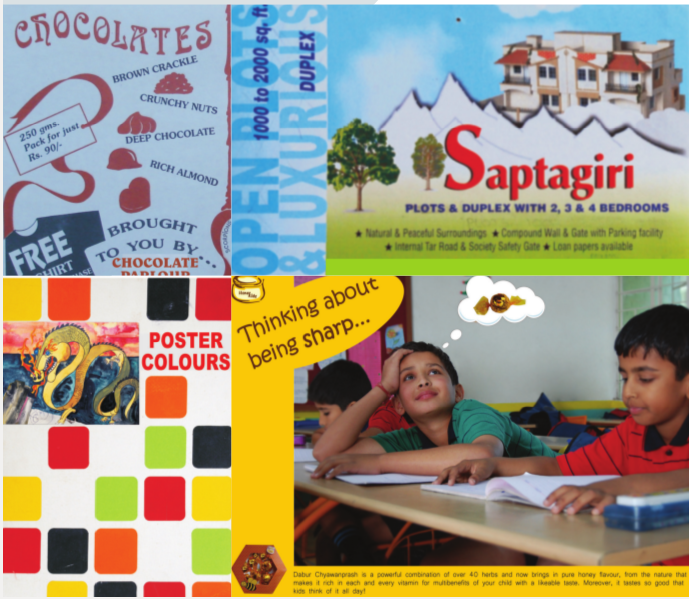
Traditionally media meant print, radio, television, cinema and outdoor advertising. But over a period of time it has changed very much. Today almost anything that can reach and influence prospective consumers or public at large is defined as media. These days advertisers depend a lot more on digital media.
The word media is the plural form of medium, ideally meaning a substance for transmitting an effect or any intervening agent like water in water colour and oil in oil paint: whereas, in this context it means “channel for communication of information.”
Earlier newspaper was the only media for communicating news and current affairs. Then radio and television became popular and there were designated time slots for news at prime time. Now news is received in different forms, on digital platforms, mobile phones and outdoor sites. Audiences can be reached anywhere and any time. The development and growth of digital technology has influenced the advertising industry and its working style. Now-a-days traditional media is supported by digital media in all strategic communication plans. However, it is felt that due to its viability and economic positioning it has far reaching results and in the coming times it is poised to take over the conventional media.
The advertising strategy as a whole requires a balance between creative thinking and business acumen. It is imperative that a person with an indepth knowledge of other areas of advertising like media, planning, costing, marketing etc. will definitely score a commanding edge.
What Is Media Planning
The selection of media is a specialised task considering the suitability for a diverse mass consumer market like India. It is the job of the media planner to decide the media or media mix for communicating the message. The most important are:
| Press: Print | Television | Outdoor Advertising |
| Radio | Cinema Advertising | Internet |

Although we get some data on readership of newspapers and magazines, it is difficult to find which media is more effective compared to another. For outdoor advertising one can try to ascertain the number of people passing a given hoarding or kiosk site, but cannot measure with accuracy to what degree the message penetrates. Similarly, it is difficult to ascertain the number of radio listeners, leave alone knowing the popularity, thus, the best one can get by way of statistics is a measure of the number of “opportunities to see.”
Print Media
It is the largest single organised advertising medium in India. Readers of newspapers and magazines are in a mood to assimilate news and information. Advertisements are, therefore, an integral part of these publications. In other media they are to a greater or lesser extent an intrusion.
Newspaper
A newspaper is described as ‘printed periodical’ containing news published daily.
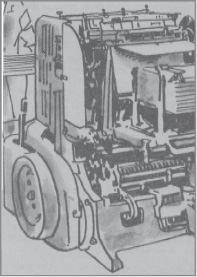
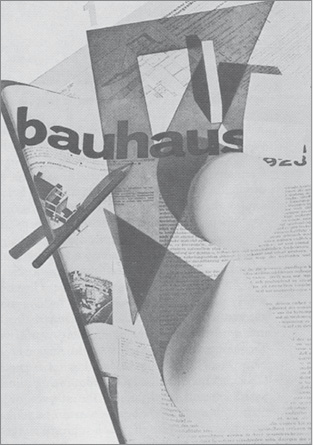
Cover page of a 1928 magazine designed by Herbert Bayer in Germany
Advantages of a newspaper
• The market can be broadly selected, catering to different types.
• The medium permits flexibility of length and size.
• Advertisements can be enhanced by the use of colour.
• Advertising can be inserted at a fairly short notice.
• Advertising can be restricted to a region, if required.
Disadvantages
• Dailies have a short life, so reading time is very limited.
• Reproduction of most vernacular papers is not of high standard, and so advertisements also suffer if they fail to attract attention.
Did you know?
• In ancient Rome, around 59 BC announcement bulletins were carved on stone or metal and made public in the regime of Julius Caesar.
• In ancient China, government officials read out orders from handwritten silk scrolls. However, by the sixteenth century there was a reference to privately published news-sheets in Beijing.
• The earliest English language papers were devoted to government proceedings. In 1702 the first daily newspaper called The Daily Courant was published.
• In India although the first printing press was imported as early as 1670, it was more than hundred years before the first newspaper was printed.
• In 1780 The Bengal Gazette also known as the Calcutta General Advertiser was the first news weekly to be published.
• Previously newspapers were printed only in black and then some publications started only magazine sections in colour, unlike the papers these days.
• The biggest edition of a single newspaper was taken out by the New York Times on 10 October 1971 with 15 sections in 972 pages. Weighing 3.5 kg it was priced at 50 cents.
Magazines
Magazines are periodicals or serial publications, containing a variety of articles, stories, regular features, and advertorials financed by advertisements of manufacturers or service providers. Magazines are distributed through mail, vendors or bookstores.
Elements that contribute to the production of magazines vary widely. There are different kinds of magazines, made for different segments of readers, called niche audiences. Some magazines focus primarily on current events and are published weekly or fortnightly, while others may be published less frequently.
Advantages of a Magazine
• People can read at leisure, or when they are in a mood.
• The market can be selected and isolated with the selection of the magazine, catering to different segments or interests.
• The medium permits flexibility of length and size and has a reasonable shelf life till the next issue is out.
• Usually sophisticated printing enhances advertisements.
Disadvantages
• Advertisements cannot be inserted at short notice.
• Reproduction requires high standards, hence, high cost of advertising.
Did you know?
• The Gentleman’s Magazine, when published in 1731, in London, became the first general-interest publication of its kind.
• In India Chandamama is the oldest children’s magazine published since July 1947.
Posters
A poster is a piece of printed paper designed in any size, to be attached to a wall or vertical surface. Typically, posters include both textual and graphic elements, although posters may be either wholly graphical or wholly textual. Posters are frequently used by advertisers for events, by political parties, protestors and others trying to communicate a message to a large audience. The modern poster dates back to the introduction of lithography printing which made mass production possible and the medium got recognised as a vital art form, attracting artists and commercial designers.
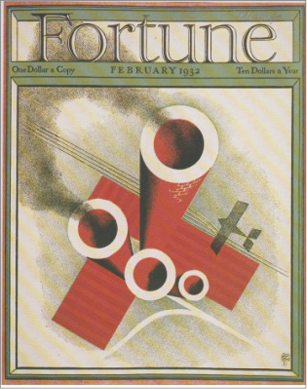
This is the cover page of 1932 fortune magazine. One can see the impact of the war.
Advantages of a poster
• Size and colour have no limitation. It can be lit up if needed.
• The area can be selected as required.
• Usually have good print quality, on paper as well as flex.
Activity 1
Collect posters and press clippings from different events, and study the text and images.
Disadvantages
• Permission is needed to put posters in public places.
• Get overlooked unless very attractive and put at strategically prominent places.
• Competitors’ posters could be in close proximity or could even overlap each other.
Thereafter posters continued to be used for advertising products, services and events. The film industry also discovered the medium and today we see many attractive movie posters.
Did you know?
• In Europe, noted artists created beautiful posters during the late nineteenth century. The best known were Henri de Toulouse-Lautrec, Alphonse Mucha and Jules Chéret.
• In Poland, posters on political and social themes became popular and people looked forward to the new creative poster every week.
• American posters were more commercial, without incorporating any real artistic creativity. During the World Wars, posters were used extensively for war propaganda, specially to motivate citizens to join the army, while others created hatred for the enemy state, whereas, some urged the women folk to work in the factories.
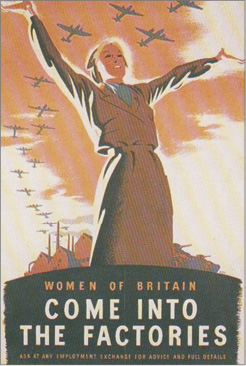
A Poster of World War II

A Dutch poster made for salad oil in 1894. Notice the artistically flowing lines and the way space is used
Books, Brochures and Journals
These also come under print media but are really not commercial in nature. Books are useful data storage medium and mostly used for educational purpose and resource materials. We also have fictional and entertaining books, as well as some which are limited editions called collector’s items. Books come in various languages, sizes and paper quality.
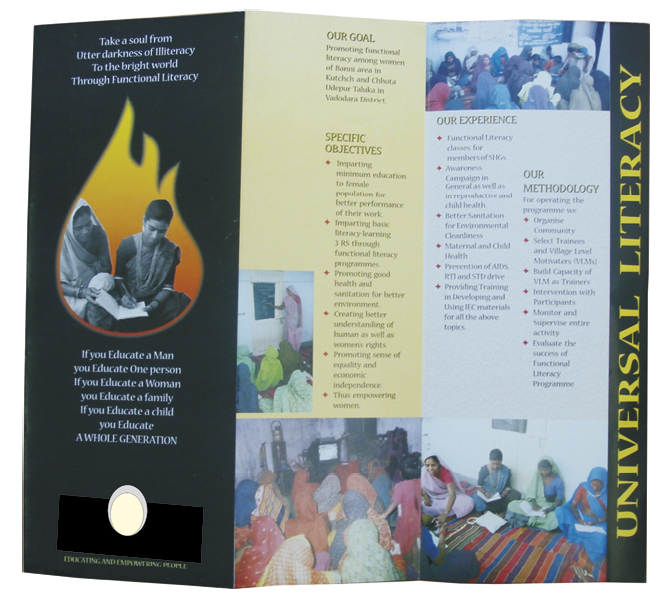
Brochures come in a variety of sizes and formats. These are used for marketing of services and products. With product range, details and price listings and usually carry photographs.
Journals are like magazines, but not of commercial nature. They are common with most business houses, and are released at appropriate and regular intervals. This medium is used in big industries for in-house circulation.
Point of Purchase
As the name suggests, this medium of advertising is in view near the point of sale and that gives the advertiser a great opportunity at the moment and at the right time to convert the message to a positive purchase. It is a continuous medium in the form of posters, kiosks, show-cards, display stands, dispensers, ambient and can be any size. Here as part of print media most pertinent are streamers and danglers or mobiles.
Direct Mail
Mailings are effective when the item involved is of high unit value. It is an expensive medium for mass purchase products. It goes along with door-to-door marketing and distribution, ensuring that every household in a selected area is covered. It has a great advantage as it is directed to specific individuals, giving a personal touch. There is no limitation of space and style, and can be read by the receiver when he is in the correct state of mind. There is no competitor on the same surface, thus ensures concentration.
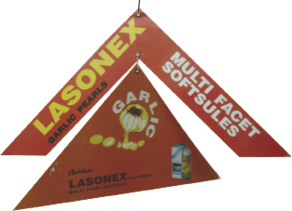
A dangler for an OTC health product. These are usually hung in shops and that is why they are called “point of purchase” advertising media
A mailing list of potential customers is needed. The advantages can easily be weighed against advertising in the press by the response. One mailing shot is comparatively useless – so a proper campaign must be prepared with the same care as for any other media.
Electronic Media
Radio
Originally, radio or radiotelegraphy was called “wireless telegraphy”. In 1906 First Radio Tube was invented. The term “Radio” is said to have been coined by the advertising expert Waldo Warren and became common by the time of the first commercial broadcasts in the United States. It was then adopted by others, however some countries continued to use the term “wireless”. Development from a laboratory demonstration to a commercial entity spanned several decades and sustained efforts.
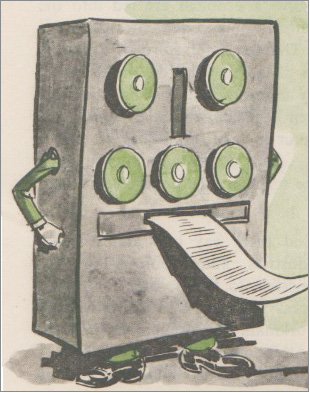
An artist’s impression of what early electronic device may have looked like.
In 1928 first commercials started on Radio in the West, while in India, Radio Broadcasting started in 1927 with two privately owned transmitters. Soon the Government took over the broadcasting and named it the Indian Broadcasting Service. Later it was re-named All India Radio (AIR). In the next two decades ‘Vividh Bharati’ an entertainment channel was introduced. After that in quick succession the ‘Vividh Bharati Vigyapan Sewa’ was started and commercials were aired on Indian Radio services in the late sixties. In another decade Frequency Modulation Transmission System (FM) was commissioned.
Currently, all AIR and other FM Stations provide enough scope and variety for programmes covering national and regional markets.
Advantages of Radio
• Wide coverage and costs are not too high.
• Can reach people on various occasions in diverse locations.
• Attracts attention using the persuasiveness of the human voice along with capturing music, it can sound “urgent” and compelling.
• Can be properly timed, to reach the target audiences.
• Target market can be reached in its own language.
Disadvantages
• By and large, radio cannot be a primary medium.
• It can only be used as a reminder or support medium.
• Has creative limitations.
• Audience profile and numbers cannot be known accurately.
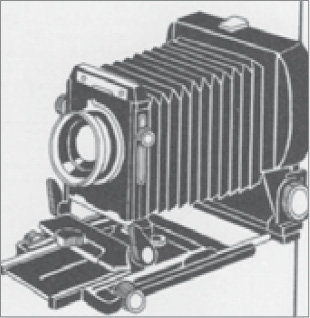
An early immobile flat-bed “bellows” camera used for exposing film plates much like the working of an x-ray machine used these days
Did you know?
Still photography was a predessor to film making and television transmission. After intense efforts of scientist accross nations and through centuries, today we me can take pictures with cameras inbuilt on our laptops and cellular phones. Initially images were captured frame by frame.
Film and Cinema
The audio-visual medium has great impact since it is life-like. Truth created by trick photography and computer graphics is shown to an audience that is in a mood to receive the message being delivered. Visuals can be captured from different angles adding to dramatic effects and appeal. Advertising during a film seems like an intrusion though it still has a advantage compared to the other Media. To ensure success, the advertiser designs the film to secure maximum impact. Cinema provides good local and national coverage penetration. Costs remain high and this medium can be used only for high end products with big budgets and large sales volumes.
Documentary Films are a very powerful medium of communications. They can be made with a view of showing it to pre-selected audience or even for general release.
These days the various media have been merged and we have what is called ‘Multimedia’. It has visuals, moving or animated images, etc. We also have something called ‘interactive’ media—where there can actually be an interface between advertiser and buyers. These actually work on our computer through satellite communication internet.
Did you know?
• The first full length talkie film in India, Alam Ara was released in 1931.
• In 1933 the first Indian talkie film in English Karma, was released. It was directed by Himanshu Rai and shot in London.
• Jhansi ki Rani was India’s first technicolor film, produced in 1952.
Television
A Hungarian scientist developed television between1923-1929 and soon commercially produced T.V. sets hit the market. In 1949 network television started in America and within a span of ten years full colour transmission began. By this time millions of homes in the western world were equipped to receive television programmes on various channels.
In India experimental telecast started from a makeshift studio in Akashwani Bhawan in New Delhi in 1959. It took some years before regular daily transmission started on Doordarshan. In 1982 India hosted Asian Games at New Delhi, simultaneously there was massive growth and expansion in telecasting networks and colour television was introduced. Before the turn of the century, foreign channels launched their service network in our country. Now we have many
24 hour news and current affairs channel among others which reach almost 30 million Indian households.
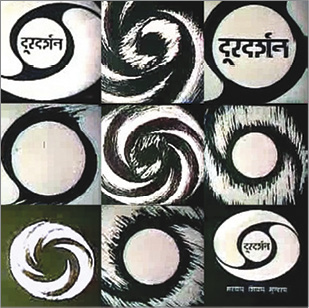
Advantages of Television
• Wide coverage deep creative impact.
• High prestige, favourable flexibility.
Disadvantages
• Rather high initial cost, limited viewer attention.
• Fleeting message requires frequent repetitions.
Did you know?
• In 1995 BBC WORLD launched in India.
• Discovery Channel was also launched in India and now reaches over 28 million households.
• 1996 AIR website started displaying news and current affair programmes.
• 1997 AIR became available on audio mode to over eighty million internet users across the world.
Online Newspaper
With the introduction of the Internet, web-based “newspapers” started to be produced as online only publications. They may not be connected to hard copy formats. To be classed as an Online Only Newspaper, the papers have to be updated at a requisite time and keep to a fixed news format. They are published only by professional media companies regulated under press rules.
Did you know?
1969 The Hindu published from Madras (Chennai) was the first newspaper to introduce facsimile edition. It also acquired an aircraft for transporting copies to Bangalore (Bengaluru), Tiruchi, Kochi, Coimbatore etc.
Outdoor Media or Out of Home (OoH)
One of the oldest methods of communication—it is actually a pre-print media. In its modern form, there are posters, hoardings, kiosks, banners, neon signs, and skywriting. Outdoor advertising is designed to catch the eye and not to be read in detail. Repetition and reminders are its tremendous forces. OoH is a highly important contribution to many advertising campaigns.
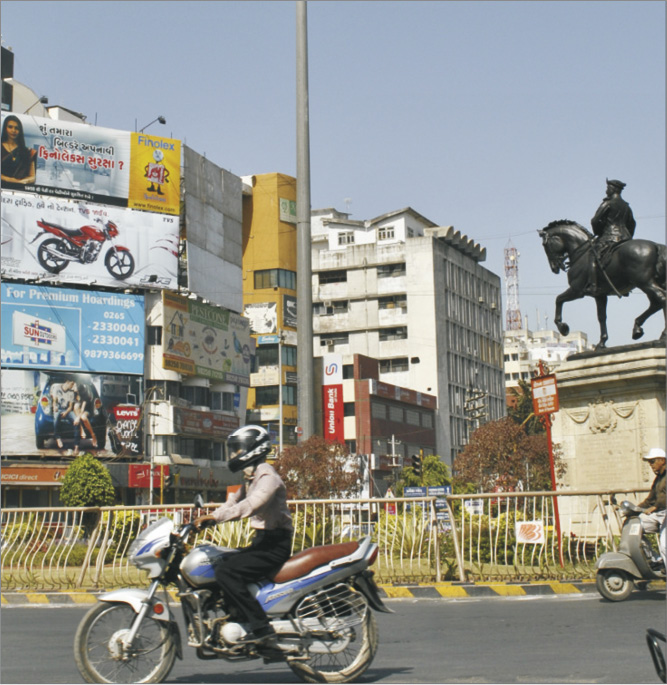
A common site at many places
Hoardings
In most outdoor media, especially hoardings, colour can be exploited to the fullest. It is cost effective and allows use of larger-than-life images. Campaigns are planned to fit any geographical location. It claims high coverage and repetition.
Disadvantages
• Length of message is restricted as the audience is on the move, and will not deliberately stop to see the advertisement.
• Competitive products are often found in close proximity.
• Not possible to pre-select a limited group of the public.
Vehicle Graphics
Also called Transport Advertising it goes piggy back on public transportation. Using outsides of buses, trains and other vehicles, it offers moving poster sites and is visible to people where these travel. It also includes placards and metal signs inside buses and trains, at railway and bus terminal poster, and kiosk sites. Private vehicles rely on this method to project their corporate signatures.
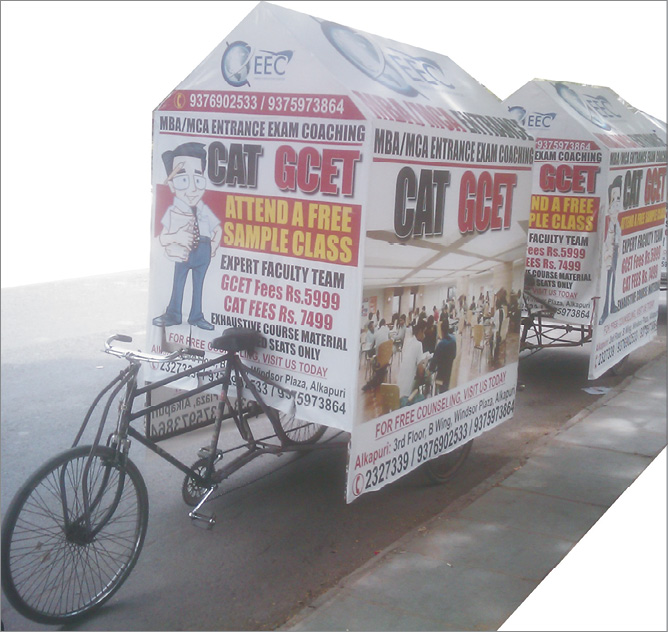
Tent like structure mounted on camel carts, bullock carts or bicycles is a common site in smaller towns. These days, the message is printed on flex, this media is often used during election campaigns or when
a circus comes to town
Activity 2
Design an innovative style of a vehicle graphic for a bus or train keeping in mind the aesthetic, functional and semiotic function of design.
Bus Bays
Bus stops or places were buses stop to pick up passengers. Passengers normally reach a stop sometime before the arrival of their bus, getting time to look around and take note of things around them: thus is a popular site for advertisements.
Neon Signs
These bright fluorescent lights glow atop of buildings with a logo or flashing a message can be seen in all big cities. They facilitate advertising during nights. These moulded tube lights have limitations as regards to detail of form, colours and lettering.
Balloons
A relatively new medium, most often employed to advertise an event. It is a large size gas balloon with a printed or painted message on it and flies high, indicating the location. These are attractive and by virtue of height and sway prove attractive and draw curious attention.
Installations and Ambient Media
In the pre-print days, when a shoe maker or cobbler hung a big size shoe outside his shop to let travellers know that “this service is available here”, it was an early version of installation. These days also the intention is to attract the passers by. Instead of a loud sales message, it carries a logo for ownership identification. This, often wordless medium is largely used for corporate advertising usually in 3D installed outside the company office, at a traffic island or at a trade fair: featuring a large replica of their product along with the logo. This medium is exploited to the fullest in its attention seeking placement and imposing size. It can also be used commercially in shopping malls.
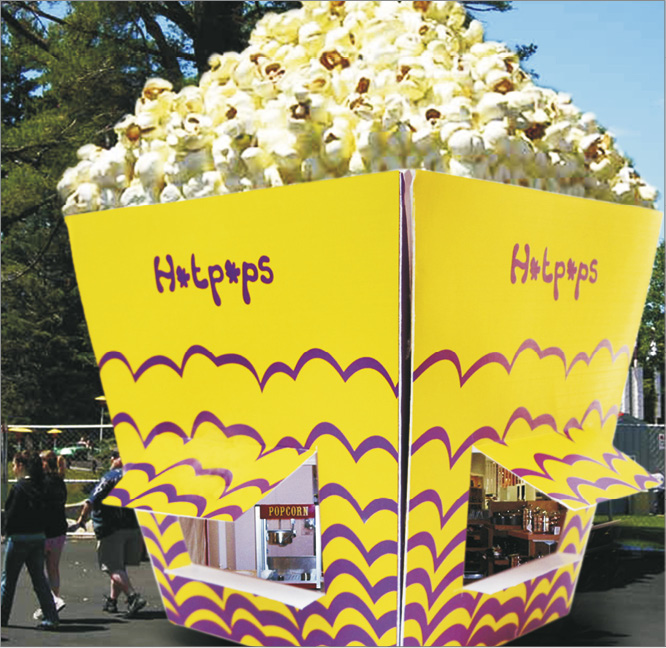
Road Shows
Road shows are a common feature when something is being launched. It was a traditional method to let people know about happenings in their town, like the arrival of a circus. It was like a mini parade-cum-publicity for the circus, when performers marched through the streets with fanfare. Participants carry banners and placards announcing the time and venue. The purpose even today remains the same but the “product” has changed, and the band has been replaced by a highly sophisticated music system and catchy electronic images.
Events
All corporate functions like Foundation Days, Annual
General Meetings, Installation Ceremonies, Product Launches and Festivals are opportunity to project a positive image of any organisation. It’s not hardcore selling, but it still gets the message across to a captive audience.
Exhibitions and Expositions
These keep happening at regular intervals around the world. For instance an auto exposition takes place in India every two years at Pragati Maidan in New Delhi. In fact Pragati Maidan was designed and developed by the Trade Fair Authority of India for such exhibitions. And many such centers are being made in Mumbai, Bangalore, Hyderabad, Kolkata and Chennai.
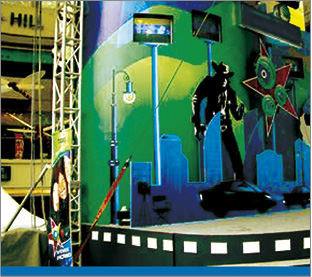
Support the marketing strategy should be integrally related to each woven into a theme
These provide an excellent chance to the manufactures and traders to display and interact, and facilitate prosperous business. (for details refer Chapter on Integrated Methods of Advertising)
Exercises
1. Explain the difference between print and electronic media, giving examples of their advantages and disadvantages.
2. For a rural campaign on ‘save the girl child’ which media would you use and why?
3. According to you which one is the oldest communication media? Support your answer with examples.
4. For an advertiser, what are the advantages and disadvantages of multiple radio and television channels?